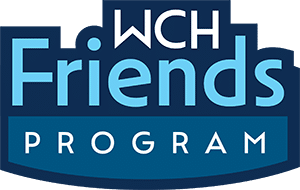
Surgery, chemotherapy, radiation therapy, and hormone therapy are the main methods of treating cancer. With new knowledge emerging every day about cancer treatment, oncotyping is one of the main ways in which breast cancer cells are assessed to determine whether chemotherapy and/or hormone therapy would benefit you as a follow-up treatment after surgery.
Let’s talk about breast cancer oncotyping and the role it plays in your treatment.
BREAST CANCER ONCOTYPING
Oncotype DX is a genomic (gene-based) test that serves to help determine the prognosis for breast cancer patients. To qualify for oncotyping, you must be a patient with an early-stage estrogen receptor-positive (ER-positive), HER2-negative (human epidermal growth factor receptor 2) tumor. You are also a candidate for oncotyping if you are diagnosed with ductal carcinoma in situ (DCIS).
Oncotype DX looks at 21 genes to determine your cancer’s likely response to treatment. Among these 21 genes, five are reference genes and 16 are breast cancer-related genes that show characteristics linked to your cancer’s hormone perception, cell growth, and invasion. The test also gives your doctor an idea about the risk of breast cancer recurrence.
Oncotyping results indicate whether treatments after surgery are likely to be successful in preventing the recurrence of breast cancer. The results show whether chemotherapy should be beneficial for estrogen receptor-positive patients, or if patients with ductal carcinoma in situ will benefit from radiation therapy.
INTERPRETING ONCOTYPE DX RESULTS
Oncotyping results are scored from 0 to 100. This is the recurrence score, which determines how likely it is that the cancer will recur in the next 10 years – the higher the score, the more likely your cancer will recur.
For patients over 50 years old, a score of 0 to 25 means your cancer has a low risk of recurrence. Thus, chemotherapy will likely expose you to needless risk and side effects; however, you may have good outcomes with hormone therapy. On the other hand, a score of 26 to 100 indicates a higher risk of recurrence, in which case the benefits of chemotherapy outweigh the risks.
For breast cancer patients who are under 50 years old, the results are interpreted differently. A score of 0 to 15 indicates a low risk of recurrence, so chemotherapy will likely not be recommended by your doctor. If your score is 16 to 20, you may be in a gray area – including chemotherapy in your treatment may be beneficial. Discuss your options with your cancer care team to know what’s best for your condition.
HOW ONCOTYPE DX DCIS IS DIFFERENT
Whereas Oncotype DX looks at 21 genes, Oncotype DX DCIS only looks at 12 genes, generally after a lumpectomy to determine its likelihood of developing into invasive breast cancer. A recurrence score below 39 means that the benefits of radiation therapy do not outweigh its risks. On the other hand, patients with scores above 54 may need radiation therapy to avoid the recurrence of breast cancer. A score between 39 and 54 shows an intermediate risk, so you will need to discuss your options with your healthcare provider.
BREAST CANCER TREATMENT IN WOOSTER, OH
Here at Wooster Community Hospital, we are committed to providing our patients with comprehensive cancer treatment. We are working in collaboration with The James Cancer Network at The Ohio State University Comprehensive Cancer Center to bring advanced oncology care for our patients.
If you have any questions or would like to schedule an appointment, call us today at (330) 262-2800 or fill out our appointment request form online. We look forward to being your partner in health!

 Cancer Care
Cancer Care
 Rehabilitation
Rehabilitation
 Women's Health
Women's Health
 Behavioral Health
Behavioral Health
 Cardiovascular Care
Cardiovascular Care
 Surgery
Surgery


